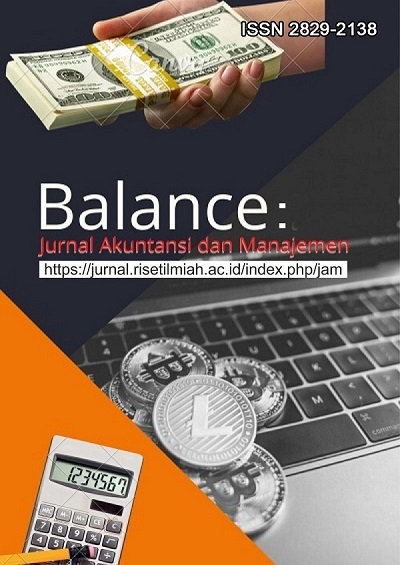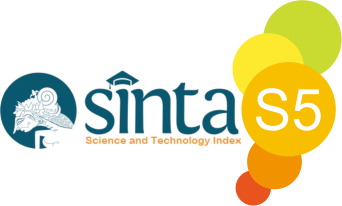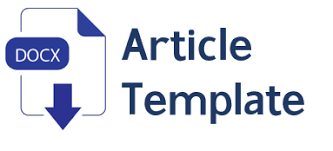Analisis Kinerja Keuangan Koperasi Kartika Berdasarkan Rasio Keuangan
DOI:
https://doi.org/10.59086/jam.v4i2.1002Keywords:
Koperasi, Kinerja Keuangan, Rasio Likuiditas, solvabilitas, RentabilitasAbstract
This study aims to analyze the financial performance of the Kartika Cooperative from 2020 to 2023 using a financial ratio approach, consisting of liquidity ratios, solvency ratios, and profitability ratios. The method used in this study is a quantitative descriptive method with secondary data obtained from the cooperative's annual financial reports. Data collection techniques using observation, documentation and interviews. Data analysis techniques using financial ratio analysis, which aims to assess the cooperative's financial performance based on indicators. The results of this study indicate that the cooperative's liquidity ratio fluctuates, indicating dynamics in the management of current assets and cash. The significant increase in 2021 reflects inefficient cash accumulation, while improvements began to occur in 2022 and 2023. In terms of solvency, the DER indicates a healthy capital structure dominated by equity, while the DAR has begun to show an increase in debt in the last two years, indicating controlled business expansion. The profitability ratio analysis shows that the ROA is in the healthy category, despite fluctuations. ROE showed a decline in 2022, but recovered in 2023, reflecting the return to productive capital management.
Downloads
References
Astawinetu, E. D., & Handini, S. (2020). Manajemen Keuangan: Teori dan Praktek. Scopindo Media Pustaka.
Brigham, E. F., & Houston, J. F. (2011). Fundamentals of financial management (11th ed.).
Fahmi, I. (2018). Analisis Laporan Keuangan. Bandung: Alfabeta.
Harahap, S. . (2021). Analisis Kritis atas Laporan Keuangan. Rajawali Pers.
Hery. (2018). Analisis laporan keuangan: Pendekatan rasio keuangan. Grasindo.
Hidayat, D. W. W. (2018). Dasar-Dasar Analisa Laporan Keuangan. Uwais Inspirasi Indonesia.
Irfani, A. S. (2020). Manajemen Keuangan dan Bisnis; Teori dan Aplikasi. Gramedia Pustaka Utama.
Kariyoto. (2017). Analisa Laporan Keuangan. Universitas Brawijaya Press.
Kasmir. (2019). Analisis Laporan Keuangan. Rajawali Pers.
Lestari, D., & Wibowo, A. (2021). Analisis Kinerja Keuangan Koperasi Berdasarkan Rasio Keuangan. Jurnal Ekonomi Dan Koperasi, 14((1)), 45–58.
Munawir. (2014). Analisa Laporan Keuangan.
Parlina, N. D., Maiyaliza, & Putri, I. D. (2023). Analisis Rasio Keuangan sebagai Salah Satu Alat Ukur Kinerja Keuangan. CV. Ruang Tentor.
Peraturan Menteri Koperasi Dan Usaha Kecil Dan Menengah Republik Indonesia Nomor 06/Per/M.KUKM/V/2006 Tentang Pedoman Penilaian Koperasi Berprestasi/Koperasi Award.
Sattar, M. (2017). Ajar Ekonomi Koperasi. Sleman.
Sawir, A. (2018). Analisis Kinerja Keuangan Perusahaan. PT Gramedia Pustaka Utama.
Sitio, A. (2001). Koperasi: Teori dan Praktek. Erlangga.
Sitorus, H., & Lumbantobing, P. (2019). Evaluasi Kesehatan KUD Berdasarkan Rasio Keuangan. Jurnal Akuntansi Dan Koperasi, 11(1), 23–34.
Sudana, I. M. (2019). Manajemen Keuangan Teori dan Praktik. Airlangga University Press.
Susanti, R. (2021). Analisis Kinerja Keuangan Koperasi Pegawai Negeri Berdasarkan Rasio Keuangan. Jurnal Keuangan Koperasi, 6(2), 101–113.
Undang-Undang Republik Indonesia Nomor 25 Tahun 1992 Tentang Perkoperasian. Lembaran Negara Republik Indonesia Tahun 1992 Nomor 116.
Wahyuni, E. (2020). Kinerja Keuangan Koperasi Simpan Pinjam di Jawa Barat: Analisis Rasio Keuangan. Jurnal Akuntansi dan Keuangan Daerah. Jurnal Akuntansi Dan Keuangan Daerah, 5(1), 14–27.
Downloads
Published
How to Cite
Issue
Section
License
Copyright (c) 2025 Hafidzah Septiani

This work is licensed under a Creative Commons Attribution 4.0 International License.
This is an open-access journal. All works are published under the Creative Commons license CC-BY which means that all content is freely available at no charge to the user or his/her Institution. Users are allowed to read, download, copy, write, improve, and create derivative creation even for other lawful purposes, this license permits anyone to, as long as they cite and license the derivative creation under similar terms

This work is licensed under a Creative Commons Attribution 4.0 International License.


















